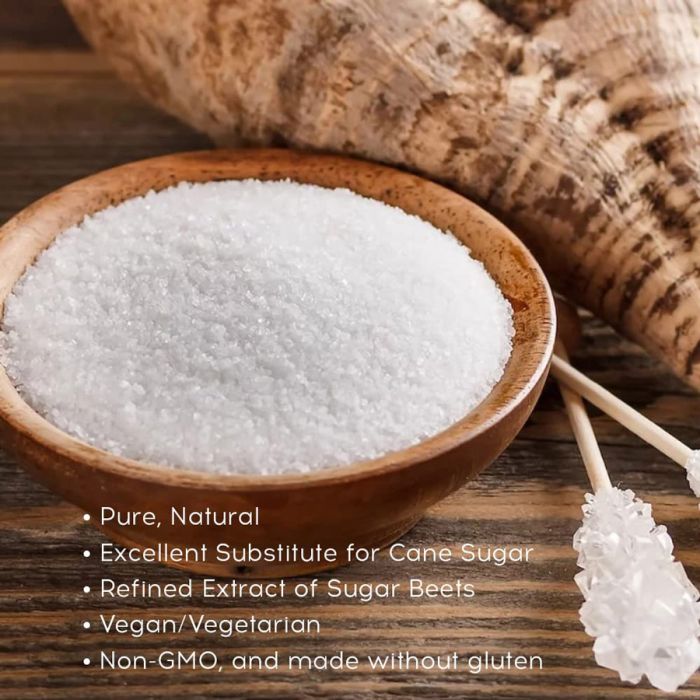People researching beet sugar vs cane sugar often want to know which mixes easily in hot drinks.
Discover the Uses and Perks of Beet Sugar Vs Cane Sugar in Your Daily Diet
Exploring the distinctive top qualities of beet and cane sugar discloses greater than simply their sweetening abilities; it highlights their distinct effect on health and cooking arts. Beet sugar, known for its refined taste, is commonly preferred in delicate treats, whereas cane sugar, with its hint of molasses, adds splendor to robust meals. Each type holds its own nutritional profile and glycemic ramifications, inviting a deeper understanding of their roles in a balanced diet regimen and sustainable consumption practices.
Origin and Production Processes of Beet and Cane Sugar

The unique climates and soil kinds required for expanding sugar beetroots and sugarcane add to distinctions in their cultivation techniques and geographic distribution, affecting the business economics and sustainability of their manufacturing. beet sugar vs cane sugar.
Nutritional Contrast Between Beet Sugar and Cane Sugar
In spite of stemming from various plants, beet sugar and cane sugar are nutritionally extremely similar, both largely containing sucrose. Each offers about 4 calories per gram, converting to approximately 16 calories per teaspoon. Structurally, both sugars are made up of roughly 99.95% sucrose, with minimal amounts of other substances like dampness and trace minerals, which do not dramatically change their dietary profiles.

Ultimately, when choosing in between beet sugar and cane sugar based upon dietary content alone, both deal identical advantages and downsides as they are essentially kinds of the same molecule-- sucrose, supplying fast energy without other nutrients.
Influence On Health And Wellness: Glycemic Index and Caloric Content
Checking out even more right into the effects of beet sugar and cane sugar on wellness, it is essential to consider their glycemic index and caloric content. The glycemic index (GI) of both beet and cane sugar is around 65, categorizing them as high-GI foods, which can trigger fast spikes in blood sugar levels.
Each kind of sugar contains about 4 calories per gram, making their calorie content equivalent. For those checking caloric consumption, specifically when taking care of weight or metabolic health problems, comprehending this equivalence is important (beet sugar vs cane sugar). Nevertheless, too much intake of any type of high-calorie, high-GI food can contribute to health and wellness problems such as weight problems, cardiovascular Visit This Link disease, and insulin resistance.
Environmental and Economic Factors To Consider of Sugar Manufacturing
Beyond health effects, the production of beet and cane sugar likewise elevates significant environmental and economic concerns. Sugar beet cultivation tends to call for cooler environments and has a lower geographical footprint compared to sugar cane, which grows in tropical regions. Both crops are extensive in terms of water usage and land line of work, possibly leading to logging and water deficiency. Financially, the international sugar market is extremely unpredictable, influenced by changes in worldwide trade policies and aids. Several countries incentivize sugar production via monetary assistance, skewing market prices and impacting small-scale farmers adversely.
Additionally, making use of chemicals and fertilizers in both beet and cane sugar cultivation can bring about dirt destruction and contamination, more influencing biodiversity and local water bodies (beet sugar vs cane sugar). The option in between growing sugar beet or cane often depends upon regional ecological problems and economic variables, making the sustainability of sugar production an intricate issue
Culinary Applications and Taste Distinctions
While the environmental and economic elements of sugar manufacturing are without a doubt substantial, the selection between beet and cane sugar also affects culinary applications and taste profiles. Beet sugar, stemmed from the sugar beet plant, is recognized for its remarkably neutral taste. This makes it a flexible component in baking, where it does not change the taste of other components. It dissolves swiftly and is ideal for use in cakes, cookies, and pastries.
Walking cane sugar, removed from sugarcane, often preserves molasses traces, which impart a distinct richness and deepness. This slight molasses taste improves the complexity of baked items, sauces, and marinades. It is specifically favored in products where a sugar touch is desired, such as in brownies or gingerbread. The slight variation in wetness content in between beet and cane sugar can influence the structure and uniformity of recipes, making cane sugar a recommended selection for particular dishes that benefit from its special homes.

Conclusion
Finally, both beet and cane sugar have distinct beginnings and production procedures, offering similar nutritional accounts with minor distinctions in salt web helpful site content and taste. While their effect on wellness, specifically relating to glycemic index and calories, is equivalent, the choice between them typically comes down to ecological, financial variables, and details culinary demands. Recognizing these aspects can assist customers in making informed decisions that line up you can find out more with their health objectives and flavor preferences.